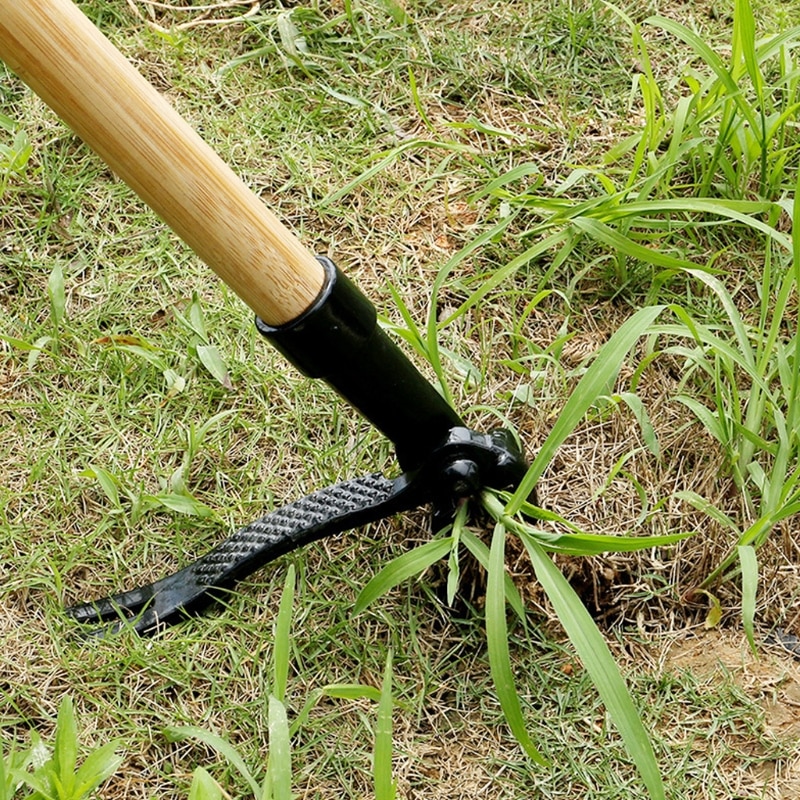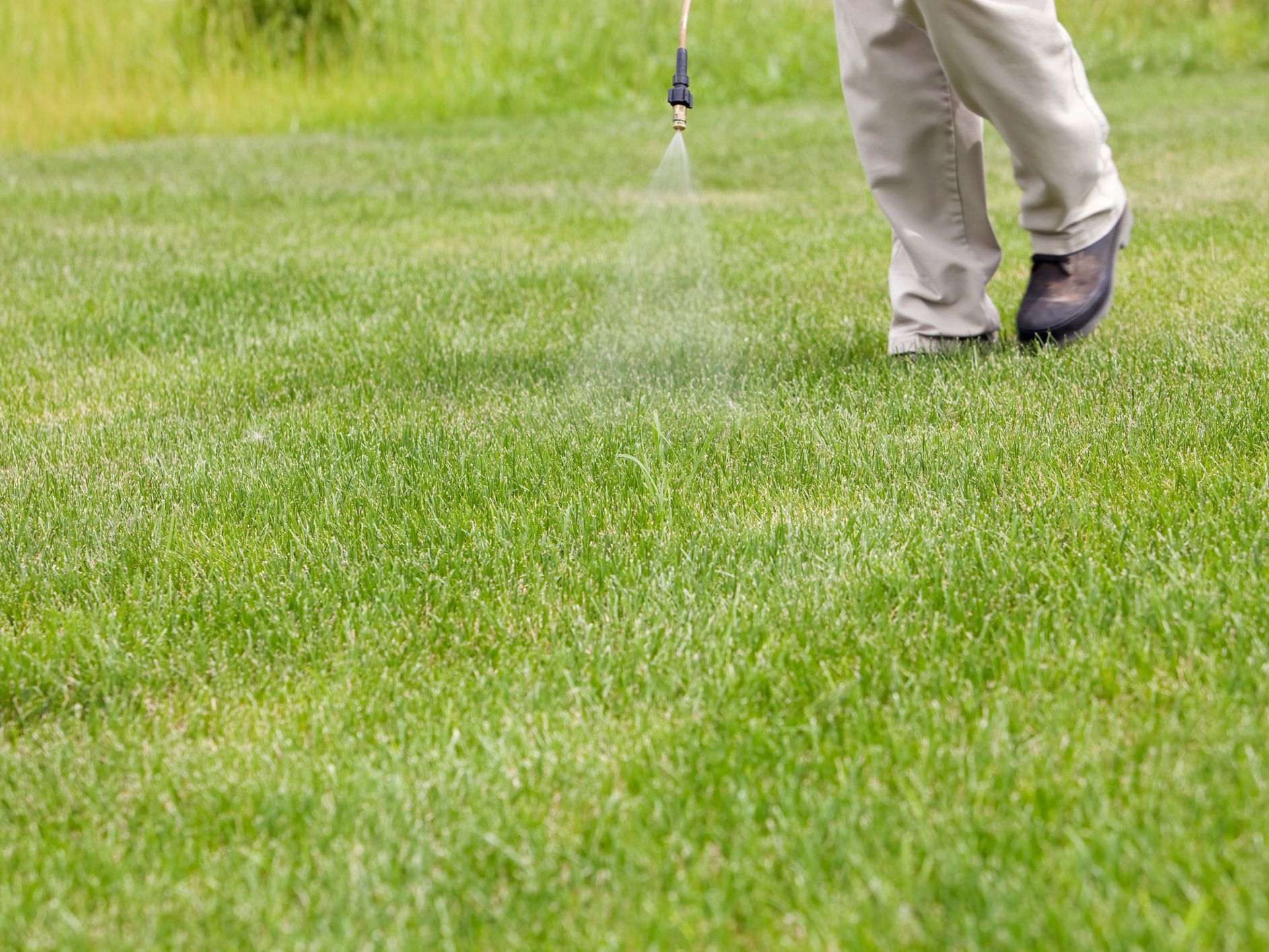Crabgrass is an invasive weed that can ruin your lawn. If you do not fight back, it will become a serious problem for you and may even lower your home’s value.
The first step in fighting crabgrass is knowing about its behavior and lifestyle. By understanding how this weed behaves, you will have an easier time finding ways to kill it and defend your turf from this invasive plant.
Many products out there claim they can help you get rid of crabgrass once and for all, but only a few works as advertised. In fact, some may cause more harm than good if used incorrectly because they contain harmful chemicals or toxins that can damage the grass when applied incorrectly or too often.
To make sure you choose the right product for killing crabgrass, check out our guide on how to kill crabgrass below.
How to Kill Crabgrass Naturally
If crabgrass is a problem in your yard, you have more than one way of getting rid of this weed. The most natural way is to cultivate a healthy lawn and outcompete the pesky weed. Other natural ways include pulling the weed in the spring, providing your lawn with the proper nutrients, and reseeding where necessary.

For tenacious crabgrass infestation, you can learn how to kill crabgrass with post emergent herbicides that kill grass well after germination. Post emergent herbicides work by killing the crabgrass plant.
On the other hand, pre eminent herbicides kill crabgrass before the seeds emerge. This makes it easier to get the job done and allowing you time in the season to cultivate a lawn where there once were weeds.
When to Kill Crabgrass
It’s important to familiarize yourself with the plant’s life cycle to effectively eradicate crabgrass. When spring soil temperatures reach 55 to 60 degrees Fahrenheit, crabgrass seeds germinate. From mid summer through fall, the plant produces more seeds to increase its numbers. Once the first frost arrives, the plants themselves are killed, not the seeds.
When using an organic method, wait until the seedlings are big enough to hand pull the roots and all. While crabgrass doesn’t spread via roots, removing the whole plant in early spring before amending the soil and reseeding is essential.
Pre-emergent herbicide, also known as crabgrass preventer, comes in either a granular or liquid form and kills crabgrass seedlings right as they germinate.
How to Kill Crabgrass Step by Step
Tools and Materials
- Post emergent herbicide
- Pre emergent herbicide
- Non selective herbicide
- Work gloves
- Organic compost
- Pitchfork or weeding tool
- Grass seed
- Pump sprayer
- Garden rake
- Spade
- Safety glasses
Pull Out the Crabgrass by Hand or Using a Tool
Before you start, you should gear up. Wear eye protection, gloves and old clothing that you don’t mind getting dirty. Also, the soil will be wet, so make sure your shoes aren’t worn out. Before hand pulling the young crabgrass, water the problem area with a sprinkler or garden hose and wait about 30 minutes for the water to soak in.

This method is very important because even if you use herbicide to kill crabgrass weed, you’ll still have to dig it out to completely get rid of it. Try this method before using chemicals because chemicals have detrimental effects on the surrounding lawn grasses. Removing crabgrass naturally by digging up is a great way of eliminating the weeds without killing lawn grass.
Apply a Crabgrass Killer Herbicide
Different types of crabgrass killer herbicides are available, but you need to make sure the one you choose is for your type of lawn. For instance, a homeowner with a St. Augustine grass lawn should not use a product designed for a Bermuda grass lawn because it will kill St. Augustine and the weed.

For buffalo grass, centipede grass, fine fescue, Kentucky bluegrass and perennial ryegrass, use herbicide with mesotrione as an active ingredient. It’s also important to read and follow the herbicide label instructions carefully. Improper use of these products can not only kill crabgrass but also other plants in your lawn.
Use a quality broadleaf weed killer to kill the crabgrass plants that remain after the seeding process. It will take several weeks to work, but it should eventually kill off any remaining crabgrass plants. Raking up all dead grass will make it easier for homeowners to keep the area free of crabgrass seeds.
Add Compost
Use a fertilizer with crabgrass fertilizer added to it to save time. Apply the fertilizer just before it rains to work the fertilizer and the herbicide into the soil. This will help thicken the turf. Thicker turf helps to squeeze out crabgrass plants missed by the herbicide. You can also learn how to make compost to use instead of artificial fertilizer.
Apply Grass Seed
If you have large bare patches in your lawn, reseed these areas with a good quality grass seed mix. A mix that contains perennial ryegrass, Kentucky bluegrass and tall fescue is a good choice. These grasses are all cool-season grasses that will germinate and grow quickly, helping to fill in the bare spots.
Apply Corn Gluten Meal
Corn gluten meal is a by-product of the corn milling process. It is a natural, organic herbicide that helps to suppress crabgrass growth. Apply it in the spring, before crabgrass germinates, at the rate of 10 pounds per 1,000 square feet.
Water the area well after application. Corn gluten also works as a lawn fertilizer due to its high nitrogen content. It works by inhibiting crabgrass seeds from forming roots after germination. Corn gluten meal can be put down as pre-emergent to prevent crabgrass and other weeds that germinate in the spring.
However, corn gluten doesn’t prevent the germination of crabgrass. Instead, it only controls it by feeding lawn grass with sufficient nitrogen, making lawn grass grow faster, choking out crabgrass.
Fight Crabgrass with Healthy Lawns
Fight those pesky crabgrass infestations by first building a healthy lawn. Black Medic, tall fescue and hybrid Bermuda grass varieties are all known for their ability to handle stress and drought and do not encourage the spread of crabgrass. A thick lawn provides a dark canopy of grass blades over the seeds to sprout.
Thoroughly water your lawn once a week to encourage the grass’s root system to go deeper, making the whole lawn hardier and heat tolerant. Avoid short, frequent watering as the sips will promote a shallow, weaker root system in your lawn. Also, don’t mow wet grass if you want to encourage healthy growth.
Apply a Double Dose of Herbicide to Crabgrass Hotspots
Limit crabgrass growth in areas like driveways, sidewalks and curbs or on south-facing banks by doing a targeted double treatment when necessary. This is because these areas absorb a lot of heat during the summer months, making them more susceptible to crabgrass.
Once you’ve treated your entire lawn, go back and make another pass about six to eight feet wide, along with hotspot areas. This will help keep crabgrass from taking hold.
Burn Weeds Off With a Blow Torch
When you’ve got an area where there is no grass at all, or you want to kill the weeds and not take out the entire lawn, try this trick. The target weeds absorb so much heat that they will pop when hit with flame. Some varieties of quack grass, for example, will burst into flames with just a couple of seconds of direct exposure to the torch flame.
However, be careful when using this method, as you can also damage nearby plants if you’re not careful. Make sure that you keep the flame moving and don’t hold it in one spot for too long. Also, avoid burning the lawn if it’s still wet from dew or rain.
This method is effective for killing weeds growing underneath the base of a tree, as the flame will effectively kill everything within about 3 to 4 inches of where it meets the ground.
Mow the New Grass
Crabgrass has a tough triangular stem to slice with a weed eating blade. However, if you take your mower and raise the blades as high as they will go, you can effectively cut the grass at its base. While this may not kill it immediately, it will prevent it from growing back for a period of time while the new grass takes hold.
If you have a lot of crabgrass, it’s best to start with the highest blade height and then work your way down as the new grass grows in. This will allow the lawn grass to protect its turf, depriving crabgrass seeds of the light they need to germinate.
Use Vinegar to Kill Crabgrass Organically
Vinegar is a natural herbicide that can be used to kill crabgrass. It’s important to use white distilled vinegar, as other types of vinegar may not be effective. To use vinegar to kill crabgrass, mix one part vinegar with three parts water in a spray bottle.
Spray the mixture on the crabgrass and weeds, and then wait for the weeds to die. Be sure to avoid spraying vinegar on any plants you want to keep, as it will kill them.
Use Baking Soda to Kill Crabgrass Naturally
Baking soda can be used to kill crabgrass. When making the mixture, it’s very important that no additional ingredients are included. To use baking soda for killing crabgrass, mix one tablespoon of baking soda with one cup of water.
Add baking soda slowly, so the solution doesn’t bubble over when mixed. Pour this mixture on the crabgrass that you want to kill.
FAQs on How to Kill Crabgrass
What kills crabgrass and not the lawn?
Post emergent herbicides such as all in one weed killer or image herbicide kill crabgrass plus other lawn weeds and leave the lawn healthy.
Is there an organic way to kill crabgrass?
Yes, you can use baking soda as an organic way to kill crabgrass. Baking soda is a natural herbicide and will not harm the green lawn or surrounding areas.
What causes crabgrass?
Crabgrass is a summer annual weed that thrives in hot summer weather conditions and does best in soil with a neutral to acidic pH level, typically between 6 and 7.5. It becomes dormant during the winter months and will remain until springtime when the soil warms up.
Crabgrass is typically seed produced; however, it can also reproduce via its roots or stolons in the same season in which it germinated.
Final Thought on How to Kill Crabgrass
As you can see, crabgrass is an unsightly weed that can wreak havoc on your lawn. It is important to get rid of crabgrass at the first sign of its germination to keep it from spreading. The most effective way to get rid of crabgrass is through preventative measures, such as applying pre-emergent herbicides in early springtime when the soil is still cool.
If you cannot get to your lawn early in the season, you should apply a post-emergent herbicide to kill the crabgrass. These methods, when used together, will give you good results in keeping these weeds under control so they won’t wreak havoc on your lawn.
The post How to Kill Crabgrass appeared first on Kitchen Infinity.
Did you miss our previous article…
https://www.conduithardware.com/?p=830